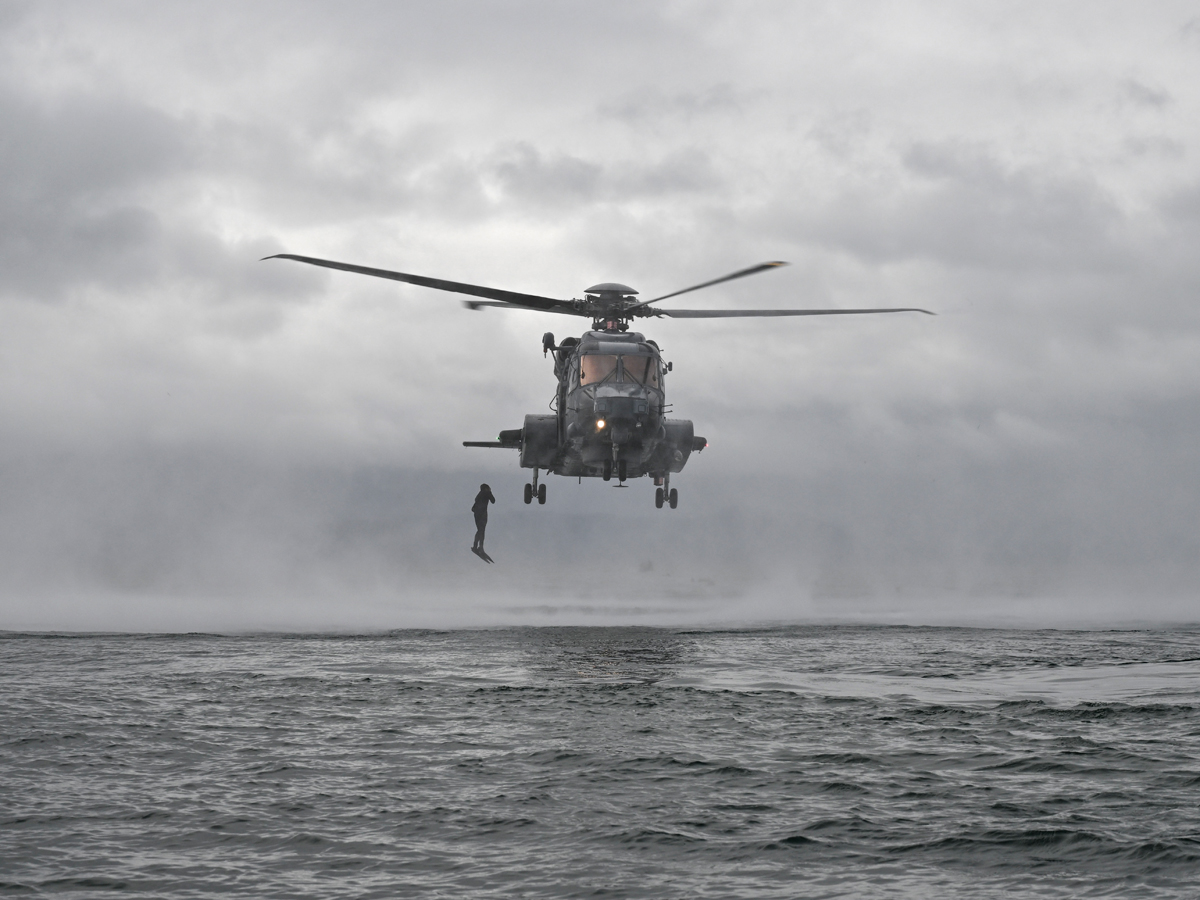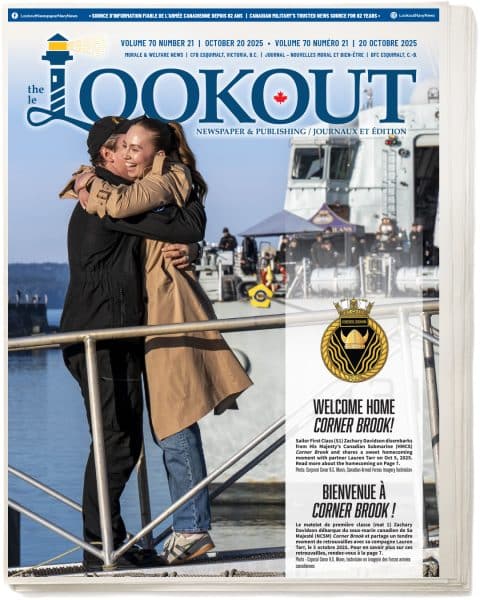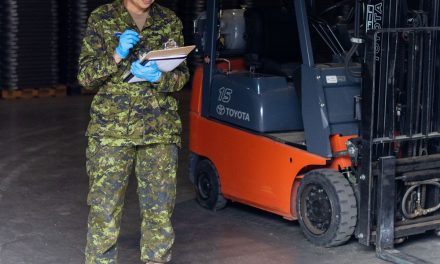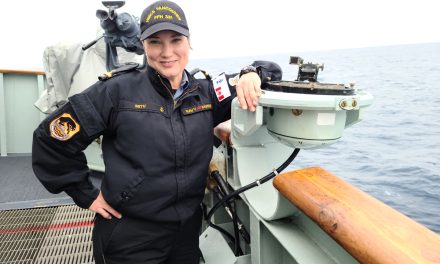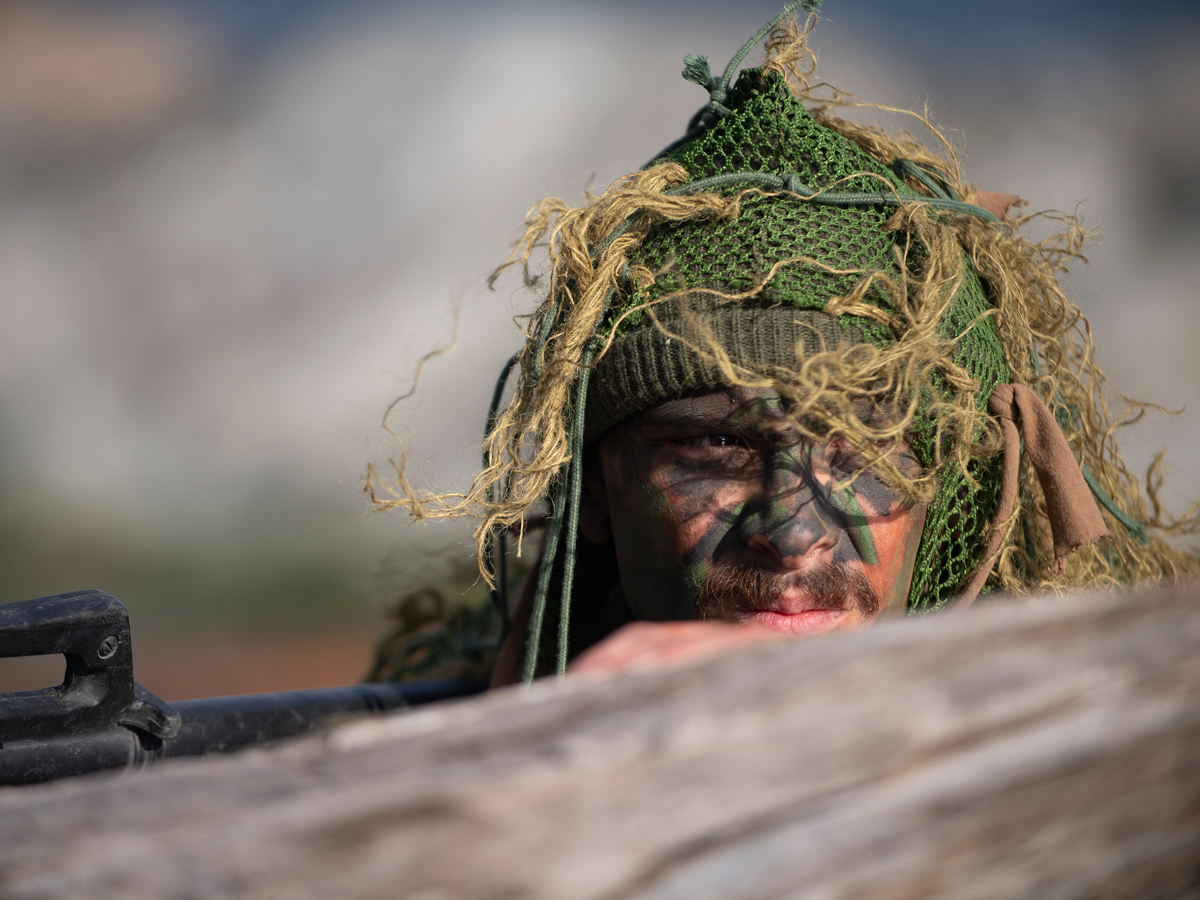
Sapper Carter Marcotte, Canadian Army Combat Engineer, participates in a landing site reconnaissance with NATO Combat Divers. Photo: Master Sailor Valerie LeClair, MARPAC Imaging Services
Peter Mallett,
Staff Writer
—
After a four-year hiatus, Exercise Roguish Buoy returned to Metchosin on Jan. 29 for two weeks, allowing 65 Army Combat Divers from Canada and worldwide to test their teamwork skills.
Working in the tides and currents of the Strait of Juan de Fuca provided a new dynamic as Combat Divers normally work in inland waterways and bodies of fresh water, said Lieutenant-Colonel (LCol) Cindy Legarie, Canadian Forces School of Military Engineering (CFSME) Commandant.
“It was a little like being a fish out of fresh water and definitely something different,” LCol Legarie said. “But our objectives were achieved, and the Canadian divers and our NATO teams integrated fantastically.”
Combat Divers are Combat Engineers by trade, grouped into mission-specific teams. Part of their role includes conducting reconnaissance operations on river crossings and bridges and clearing underwater obstacles to help maintain the mobility of friendly forces.
The theme of this year’s exercise was Mobility Support. Much of the training involved surveillance of a pier off Metchosin and making beaches and shorelines safe for landing parties.
Captain (Capt) Alexander Scott, Officer-In-Charge of the Army Dive Centre’s Tactics Squadron and Exercise Coordinator says the overall focus was to enhance interoperability, develop skills and standardize tactics, techniques and procedures between dive teams.
“Familiarity between divers under the water is very important to improve moving in the correct formation keeping in mind the visibility [underwater] and tides can make things tricky,” said Capt Scott.
The divers broke into four teams for the exercise. Using a combination of Rigid Hulled Inflatable Boats (RHIB) and ‘Nav 19’ boats to move their people and equipment, the divers dived to depths of 15m while employing the Compressed Air Breathing Apparatus (CABA) Lite Diving System. They tested their navigation and interoperability diving skills by swimming in formation to locate and conduct surveillance of the pier.
Once at the site, their task was to measure and record its dimensions and take photographs and drawings of the pier to determine weak spots before developing a plan for its demolition.
Capt Scott quickly offered a favourable assessment of this year’s event.
“The exercise was very successful, and everyone is leaving a better soldier and diver,” he said. “It was certainly beneficial to get this exercise back on track as it is the only collective dive training event the Army has and also ensures best practices with NATO divers so we can enhance our capabilities.”
EXERCISE ROGUISH BUOY
Roguish Buoy 2024 involved 72 Canadian Armed Forces (CAF) Combat Divers and support staff, and 18 military divers from NATO member countries: the United States, Germany, the United Kingdom, France, Belgium, and the Netherlands.
Roguish Buoy was hosted by the Army Dive Centre and Canadian Forces School of Military Engineering (CFSME) of Canadian Division Support Base Gagetown, N.B. The exercise takes place in a different location each year. The last iteration of Roguish Buoy was in 2020, as complications related to the COVID-19 pandemic and other logistical issues contributed to successive postponements.
The Canadian contingent of Combat Divers for Roguish Buoy 2024 came from four dive units based in Edmonton, Alta., Petawawa, Ont., Valcartier, Que., and Gagetown, N.B. All divers were housed at the Cadet Training Centre, with the facilities at CFB Esquimalt providing the perfect backdrop to enhance the teamwork dynamic.
Other activities during Roguish Buoy 2024 included:
- Underwater Dive Team Navigation;
- Teaching divers how to swim in teams of two to eight divers from one location to another without coming to the surface;
- Landing Site Reconnaissance;
- The gathering of information on beaches and areas of the shoreline suitable for landings;
- Explosive Minefield Breaching;
- Removing obstacles placed by the enemy so divers can land there;
- Obstacle Emplacement, involving divers placing obstacles on the beach, including steel hedgehogs and unloaded land mines;
- Helocasting, a method of inserting divers into the water by helicopter.
The exercise also allowed divers to recertify their qualifications.
